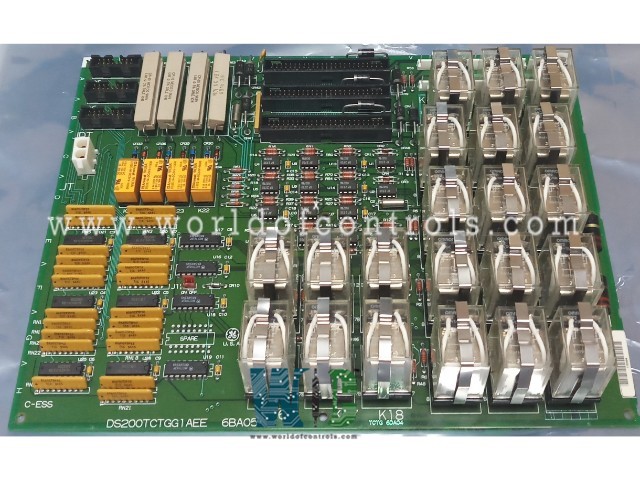
World Of Controls understands the criticality of your requirement and works towards reducing the lead time as much as possible.
DS200TCTGG1A - GT/TMR Simplex Trip Board is available in stock which ships the same day.
DS200TCTGG1A - GT/TMR Simplex Trip Board comes in UNUSED as well as REBUILT condition.
To avail our best deals for DS200TCTGG1A - GT/TMR Simplex Trip Board, contact us and we will get back to you within 24 hours.
Part No.: DS200TCTGG1A
Manufacturer: General Electric
Country/Region of Manufacture: United States of America(USA)
Product Type: Turbine Trip Board
Series: Mark V
DS200TCTGG1A is a Turbine Trip Board (TCTG) developed by GE. It controls the fuel shutoff halves for the turbine and is located in position 4 of the core. On the TCTG board, there are two different trip relay types available for failsafe fuel valve functioning. Primary trip relays (PTRs) and emergency trip relays are both available (ETRs). The PTRs are controlled by the CSP and communication errors. The ETRs are managed by the TCEA boards in the core, and an emergency trip requires a 2/3 vote. Pushbuttons for hardwiring trips will turn off the 24 V dc power to the PTR and ETR relays and start a trip. The TCTG board also houses the synchronizing relays.
Hardware
On the TCTG board, there is only one hardware jumper. The Emergency Overspeed servo Clamp is J1. Activate the jumper to open servo valves 1-4. Applying 24 V dc to the servo outputs requires the usage of this jumper. On the TCQC board is where the actual relay is situated.
Software
The TCTG board is not configured with any software.
The trip signals for the ETR relays are produced by the TCEA boards X, Y, and Z in the P1 core. The signals are written to the TCTG board through the JLX/Y/Z connections. To decide whether the unit should be tripped, the ETR relays conduct a hardware level two-out-of-three vote. By opening and closing a string of associated contacts on the TCTG board, the device trips if two out of the three relays call for a trip. High-pressure shaft Overspeed and rapid deceleration, low-pressure shaft Overspeed and rapid deceleration, and cross trip are signals that will trip the ETR relays. The JM connector is then used to write the trip signals to the PTBA terminal board.
The STCA board in R1 and the TCEA boards in the P1 core are where the signals to close the generator breaker come from. The TCEA boards use the PT signals from the PTBA terminal board to do the automatic synchronization computations and to deliver the permission signal to close the breaker. The STCA board in the R1 core simultaneously calculates a synchronizing permissive (synch check) and transmits a permissive to close the breaker. The TCTG board votes in favor of the automated synchronized signals by a margin of two to three. If R1 has provided the synch check signal and two out of the three automatic synch signals have been received, the TCTG board will let the breaker be closed.
To start a trip when the contacts are opened, normally closed contact inputs can be plugged into the PTBA terminal board. Examples of these include emergency stop buttons. The K22, 23, 24, and 25 relays are tripped by these signals, which are read by the JN connection and written to the TCTG board. In relation to an ANSI standard device number for the Master Protective, these relays are referred to as the4. The PTR and ETR relay trip when the 4 are tripped because they are connected to a 24 V dc protection bus, which is de-energized when the 4. The TCEA board normally records the event back to the Control Engine and monitors the hardwire trip signals 1 through 3 for an emergency halt.
WOC experts are always available to help you with your GE turbine control component requirements. For more information, please contact WOC.
What is DS200TCTGG1A?
DS200TCTGG1A is a Turbine Trip Board (TCTG) developed by GE.
Whether the board can be software configured?
No, the TCTG board is not configured with any software.
How does the board function failsafe fuel valve functioning?
The trip relay on the board will perform failsafe fuel valve functioning.
How many hardware jumpers are there on the board?
The board includes one hardware jumper.